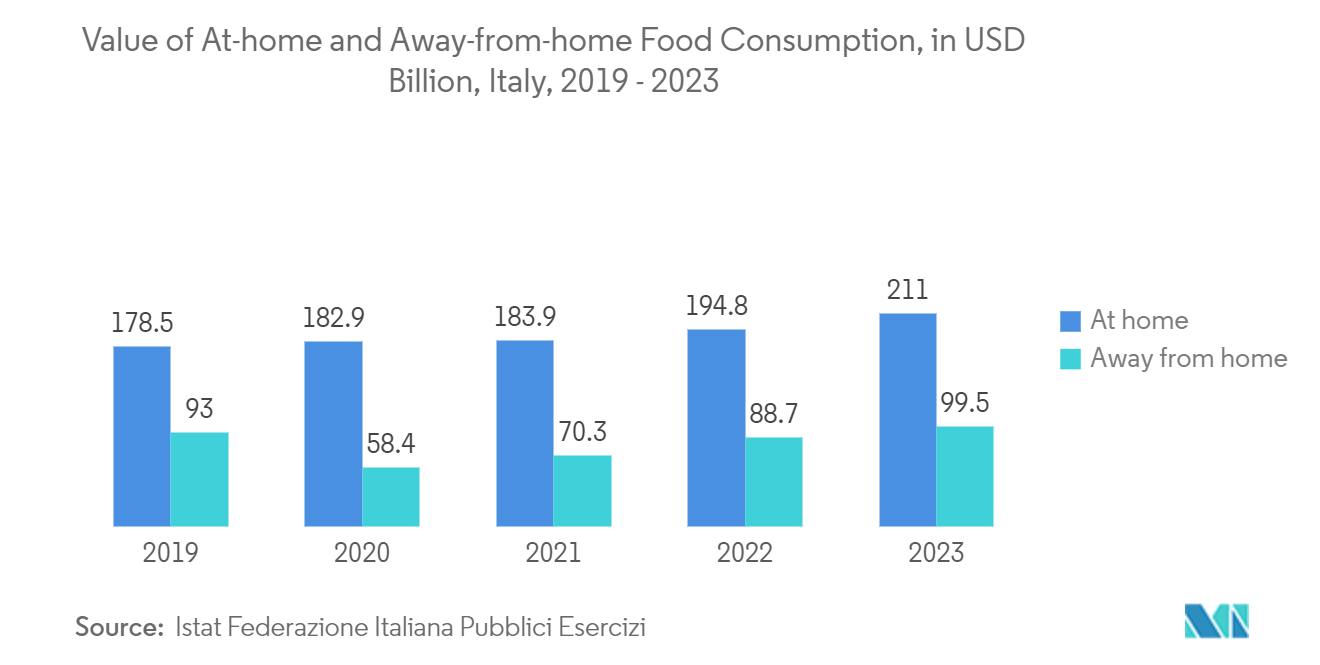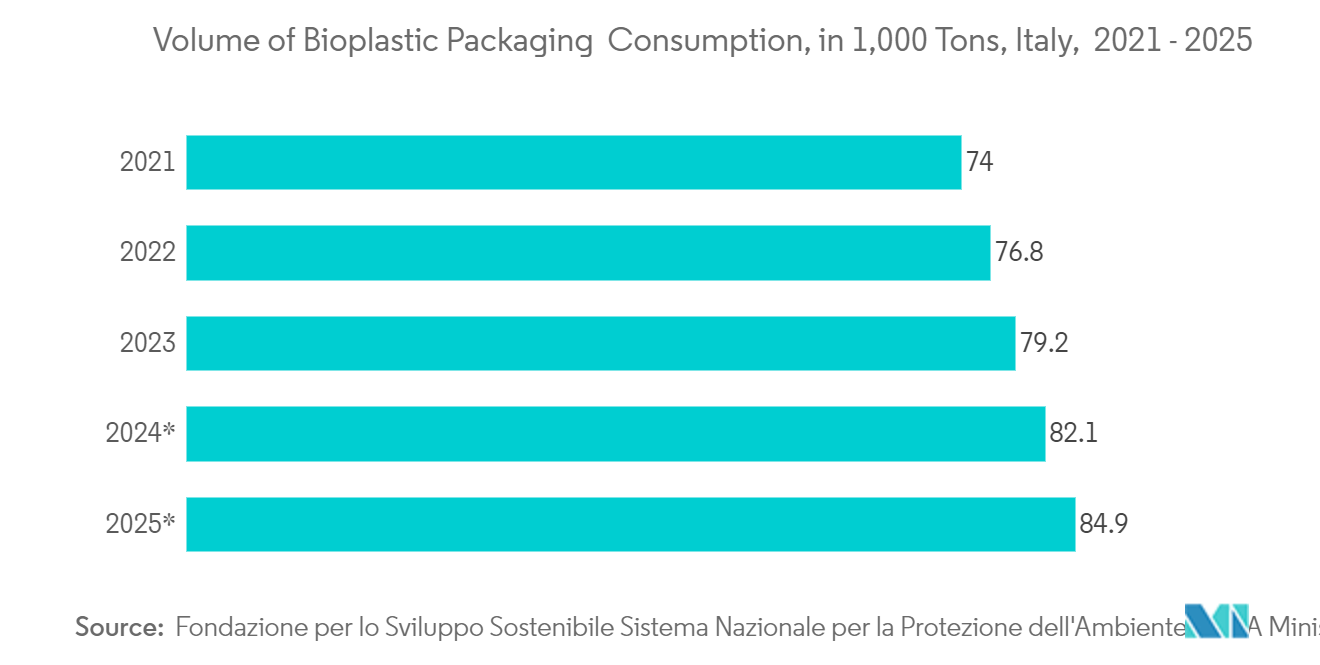Market Trends of Italy Plastic Packaging Films Industry
Food Segment to Hold Significant Market Share
- Plastic films are crucial in Italy's food industry, enhancing shelf life and shielding products from external factors like moisture and oxygen. Evolving food packaging demands, driven by new applications, are pushing for improved specifications. A critical focus is developing advanced barrier films to create more robust packaging. Improving the barrier properties of packaging films is essential to prolonging food shelf life and mitigating spoilage and damage risks.
- Italy's growing appetite for food is a crucial driver behind the rising demand for specialized plastic films tailored to different food products. This upsurge is fueled by the need for packaging that ensures food safety, extends shelf life, and enhances product visual appeal. As consumers place a higher premium on health and convenience, the plastic film market in food packaging is experiencing a significant uptick, opening doors for innovation and market expansion.
- Moreover, with advancements in material science and manufacturing technologies, the industry is witnessing the emergence of more sustainable and efficient plastic film solutions, further bolstering market growth. The escalating shift toward e-commerce for grocery purchases also amplifies the need for durable and trustworthy packaging solutions.
- Further, in Italy, a growing preference for baked goods, confectionery, and convenience foods is fueling the need for flexible packaging, particularly polyethylene barrier films. These films, known for their moisture-barrier capabilities, are pivotal in prolonging product shelf life. With Italian consumers favoring easily accessible packaging, plastic film solutions are the dominant choice, especially for ready-to-eat and convenience foods.
- In 2023, Italy saw a 12% surge in household spending on food outside the home, reaching a total of USD 99.5 billion. This rebound marked a recovery from the effects of the COVID-19 pandemic. The increase in out-of-home food consumption indicates a shift in consumer behavior towards dining out more frequently. Conversely, spending on food consumed at home hit a high of USD 211 billion in 2023, up from USD 183.9 billion in 2021. This rise in at-home food expenditure reflects a sustained preference for home-cooked meals. This trend is poised to significantly impact the demand for plastic films in various food packaging needs, as both sectors—out-of-home and at-home food consumption require different packaging solutions to meet consumer demands.

Bioplastic Segment Expected to Hold Significant Share in the Market
- Lauded for their eco-friendly nature, bioplastics offer a safe packaging alternative. Specific variants of bioplastics boast easy biodegradability. Widely adopted, they find applications in packaging various products, from food and medicines to beverages. Beyond edibles, they extend their utility to non-food items such as napkins and tissues. Moreover, bioplastics play a pivotal role in crafting materials like cardboard and paper, which are essential for food wrapping, and in producing cups and plates. Their versatility shines as they seamlessly transition between flexible and loose-fill packaging solutions.
- The adoption of bioplastics for plastic bag production is surging in Italy. These eco-friendly bags find widespread utility, especially in collecting organic waste. Their applications span diverse settings, including hospitals, hotels, restaurants, commercial establishments, retail outlets, and households. Moreover, several regional governments have joined in, endorsing the utilization of bioplastics for such initiatives.
- Italy's bioplastic packaging consumption has risen, reaching 79.20 thousand tons in 2022. This increase reflects a growing trend toward sustainable packaging solutions. Projections indicate a further 10% growth from 2022 to 2025, driven by heightened environmental awareness and regulatory support for eco-friendly materials. The shift toward bioplastics is also influenced by consumer demand for greener alternatives and advancements in bioplastic technology, which have made these materials more competitive with traditional plastics in terms of cost and performance.
- Italy's increasing environmental regulations and heightened awareness of plastic pollution are set to drive a surge in demand for bioplastics in the near future. The government's stringent policies to reduce plastic waste and consumer preference for sustainable alternatives are further expected to bolster the bioplastics market. Additionally, advancements in bioplastic technology and production processes are expected to enhance the material's appeal and adoption across various industries.


